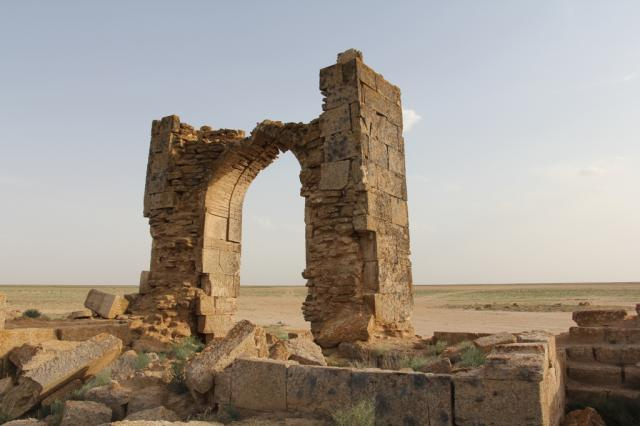Caravanserais were key for the development and success of the trade routes. A safe place for travellers that combined the functions of a storehouse, inn and even fortress. Unfortunately, not many remain in Central Asia. Let's explore the region's finest examples  1/7
1/7
 1/7
1/7
Perhaps the most grandiose of the caravanserais left in the region is Rabat-i Malik. Its impressive 12-metre portal is its most striking feature. We owe its existence to Shams-al-Mulk Nasr (1068-80), the Karakhanid ruler of Samarkand 2/7
 Navoiy region
Navoiy region
 Navoiy region
Navoiy region
Dayhatyn started life as a Tahirid fortress (9th century), and was later transformed into a caravanserai (11th-12th centuries) by the Seljuks. It's Turkmenistan's best-preserved caravanserai and is currently being restored thanks to US funding 3/7
 Lebap region
Lebap region
 Lebap region
Lebap region
The picturesque Tash Rabat is shrouded in mystery. Some theories say it was originally built as a caravanserai, others as a Nestorian monastery. What we see today does seem to have been erected during the reign of Muhammad Khan of Moghulistan (1408-15) 4/7
 Naryn province
Naryn province
 Naryn province
Naryn province
Despite its large dimensions (150x80m), Akcha-kala is mostly unknown. Located on the ancient road from Merv to Amul (Turkmenabat), it was built in the second half of the 11th century by the Seljuks 5/7
 Mary region
Mary region
 Mary region
Mary region
Little is left of Beleuli in the arid Ustyurt Plateau. Built by the Mongols in the 13th century, the complex consisted
of a caravanserai, a cistern, wells, quarries and cemeteries. What survives to this day of the caravanserai is its
portal 6/7
 Karakalpakstan
Karakalpakstan
of a caravanserai, a cistern, wells, quarries and cemeteries. What survives to this day of the caravanserai is its
portal 6/7
 Karakalpakstan
Karakalpakstan

 Read on Twitter
Read on Twitter










 Razavi Khorasan province
Razavi Khorasan province




